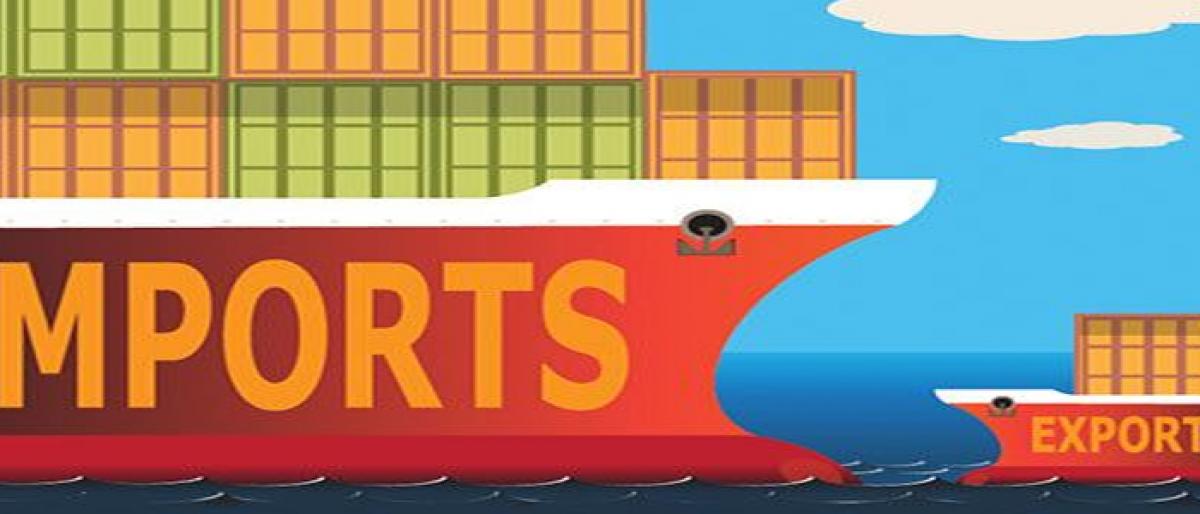What is Trade deficit?

India\'s exports-to-gross-domestic-product (GDP) ratio at 11.44 percent in 2017 was the lowest since 2005, according to the International Monetary Fund (IMF) Outlook Report 2018.
India's exports-to-gross-domestic-product (GDP) ratio at 11.44 percent in 2017 was the lowest since 2005, according to the International Monetary Fund (IMF) Outlook Report 2018.
Slowing exports and increase in imports (an average annual increase of 1.6 percent from 2014-15 to 2017-18) has pushed the trade deficit from $137 billion in 2014-15 to $162 billion in 2017-18, the highest since 2012-13.
The fall in India's exports do not follow global patterns – the growth rate of goods traded across the world grew 3 percent over the four years to 2018 and grew by 3.3 percent (2009 to 2013) – according to International Monetary Fund. Various experts attributed the Indian export decline to domestic factors, such as demonetisation, a new goods and services tax (GST) and a new bankruptcy code, according to Firstpost.
Investopedia.com says that a trade deficit is an economic measure of international trade in which a country's imports exceeds its exports. A trade deficit represents an outflow of domestic currency to foreign markets. It is also referred to as a negative balance of trade (BOT). Trade Deficit = Total Value of Imports – Total Value of Exports. Because the trade balance is the largest section of the current account, a trade deficit (or surplus) usually translates to a current account deficit (or surplus).
A trade deficit typically occurs when a country does not produce enough goods for its residents. Alternatively, a deficit means that a country’s consumers are wealthy enough to purchase more goods than the country produces. India’s current account in the balance of payments ended in a deficit of $ 13.5 billion or 2 per cent of GDP in the quarter ended December 2017.
Caroline Freund at PIIE.com suggests three ways to reduce the trade deficit: 1. Consume less and save more; 2. Depreciate the exchange rate, and ; 3. Tax capital inflows. Although it seems intuitive that trade policy should be the appropriate instrument for a trade deficit—just as fiscal policy is the right tool for a fiscal deficit—the economics do not work that way. Higher tariffs on one country or product divert trade to other countries or products, distorting consumption but leaving the trade balance roughly unchanged.


















